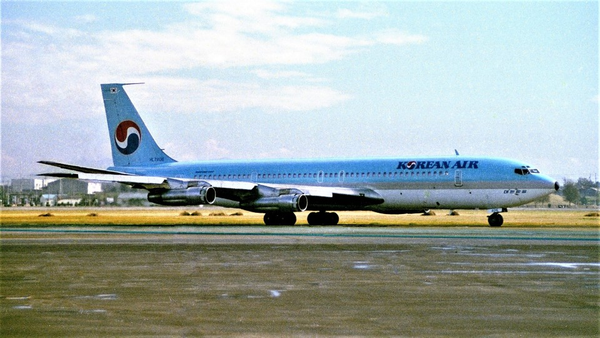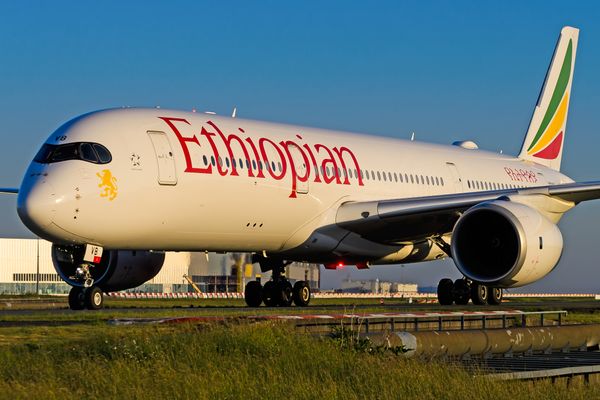Aviation's history is intertwined with risk, with tragedies that challenged the industry's confidence in conquering the skies. However, aviation achieved a major milestone in 2023, supporting the tireless pursuit of safety in the skies.

The Safest Year in Aviation History
With zero major commercial jet crashes in 2023, it is a testament to countless individuals' relentless efforts, from engineers crafting ever-more sophisticated aircraft to pilots honing their skills in rigorous training programs. Advancements in technology, stricter regulations, and unwavering international cooperation have significantly contributed to this achievement.
However, 2023 was not entirely without turbulence. While the giant metal birds of commercial aviation remained grounded in safety, smaller planes and private jets encountered tragedy.
A Yeti Airlines Flight 691 crash in Nepal, claiming all 72 lives onboard, serves as a stark reminder that even the most stringent measures can be challenged by unforeseen circumstances. The incident highlights the need for continued investment in safety infrastructure and training, particularly in developing regions.

Furthermore, the lack of transparency surrounding the Embraer Legacy 600 crash in Russia raises troubling questions about international cooperation in accident investigation. The failure to involve the manufacturer and relevant aviation authorities sets a concerning precedent, potentially hindering the learning process and jeopardizing future safety efforts.
Beyond crashes, the year also saw tragic incidents on the ground, with airline employees losing their lives due to engine ingestions. These heartbreaking events underscore the importance of prioritizing safety throughout the entire aviation ecosystem, not just in the air.

Factors Behind Aviation's Strong Safety Record in 2023
These events contributed to aviation's strong safety record in 2023:
- Technological Marvels: Advancements in aircraft design and maintenance play a crucial role. Enhanced navigation systems, improved weather prediction models, and robust safety features like crash-resistant fuel tanks significantly mitigate risks.
- Rigorous Training and Procedures: Airlines invest heavily in comprehensive training programs for pilots and crew, honing their skills and equipping them to handle even the most unexpected situations. Strict adherence to safety protocols, standardized across nations, adds another layer of protection.
- Collaboration and Regulation: International organizations like the International Civil Aviation Organization (ICAO) and the Federal Aviation Administration(FAA) foster cooperation and knowledge sharing, upholding global safety standards. Stringent regulations by national aviation authorities further bolster this commitment.
- The Human Factor: Beyond technology and protocols, the dedication of countless individuals – from meticulous engineers to skilled pilots and vigilant air traffic controllers – is fundamental. Their constant vigilance and unwavering commitment to safety form the bedrock of aviation's success.

Despite these challenges, 2023's record-breaking safety performance offers hope. It demonstrates the incredible progress made in the field and is a powerful motivator for continued innovation and collaboration. As the world celebrates this milestone, it must acknowledge the remaining challenges.
The aviation industry must remain attentive, constantly striving to learn from past incidents and implement measures to prevent future tragedies. By embracing transparency, fostering collaboration, and continuously pushing safety boundaries, we can ensure that the skies remain a domain of wonder and safety for generations.
GTF Storage Crisis Deepens: 835 Aircraft Grounded as Pratt & Whitney Recalls Surge Post-Mid-Year » Air France Suspends Paris-Manila Service for Summer 2026 » IndiGo Unveils Delhi–London Expansion and First A321XLR Launch »
Comments (0)
Add Your Comment
SHARE
TAGS
NEWS Safety Incident Pilot Technology CrashRECENTLY PUBLISHED
 VIDEO: What It's Like Onboard China's COMAC C919
We flew onboard China Eastern's COMAC C919 to experience China's homegrown narrow-body up close. From seat comfort to cabin layout to noise levels to tech: how does it really compare with the Boeing 737 and Airbus A320? This review puts all three workhorses under the same spotlight.
TRIP REPORTS
READ MORE »
VIDEO: What It's Like Onboard China's COMAC C919
We flew onboard China Eastern's COMAC C919 to experience China's homegrown narrow-body up close. From seat comfort to cabin layout to noise levels to tech: how does it really compare with the Boeing 737 and Airbus A320? This review puts all three workhorses under the same spotlight.
TRIP REPORTS
READ MORE »
 KAL858: The North Korean Bombing that Shocked the World
Among the 99 passengers boarding Korean Air Flight 858 on November 29, 1987, few could imagine their journey would end as one of aviation's darkest mysteries.
STORIES
READ MORE »
KAL858: The North Korean Bombing that Shocked the World
Among the 99 passengers boarding Korean Air Flight 858 on November 29, 1987, few could imagine their journey would end as one of aviation's darkest mysteries.
STORIES
READ MORE »
 Ghost Networks: The Rise, Fall, and Revival of Fifth-Freedom Flights
Fifth-freedom flights — routes where an airline flies between two countries outside its home base — have always lived in aviation's twilight zone. We chart their rise, their near-disappearance, and the surprising markets where they still thrive today. Then we take you on board a special Seoul-Tokyo fifth-freedom flight to show how the experience stacks up against a typical regional carrier.
TRIP REPORTS
READ MORE »
Ghost Networks: The Rise, Fall, and Revival of Fifth-Freedom Flights
Fifth-freedom flights — routes where an airline flies between two countries outside its home base — have always lived in aviation's twilight zone. We chart their rise, their near-disappearance, and the surprising markets where they still thrive today. Then we take you on board a special Seoul-Tokyo fifth-freedom flight to show how the experience stacks up against a typical regional carrier.
TRIP REPORTS
READ MORE »



